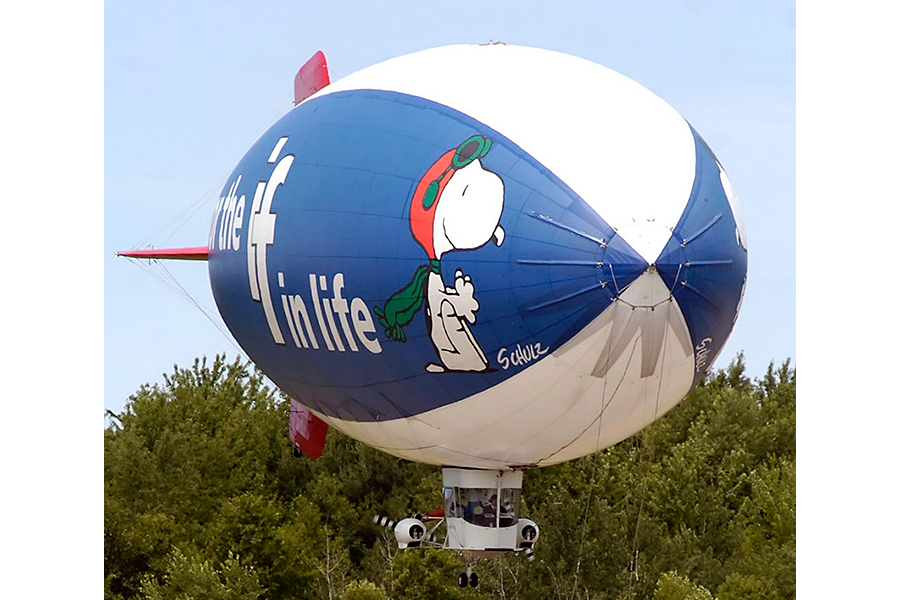See you, Snoopy: why insurance co. is saying goodbye to cartoons
Loading...
MetLife has said “good grief” to its beagle mascot and the rest of the Peanuts gang, ending a 31-year relationship with the world-famous cartoon characters.
The insurance giant announced on Thursday Snoopy will no longer be its mascot, as it rebrands itself with a new logo and tagline starting in 2017, and parts ways with most of its consumer-based life insurance in the United States.
MetLife seized in 1985 on the nostalgic appeal of Snoopy, Charlie, Linus, and Lucy when it started to use the characters in life insurance ads, business cards, and even blimps. But warm memories of the mischievous beagle and holidays spent watching Charlie Brown specials have dissipated from generation to generation, with the disappearance of Saturday-morning cartoons, and the rise of streaming services.
While animated characters like the Geico insurance gecko continue to be popular spokesmen, MetLife’s decision to fire Snoopy represents a shift in the demographic the insurer plans to market to as cartoons take on a different meaning for a younger generation.
“The people who grew up with Peanuts, who really feel that strong nostalgia, are not the majority of people MetLife is trying target,” Breagin Riley, a marketing professor at Syracuse University’s Whitman School of Management, tells The Christian Science Monitor in a phone interview. “The old way is just not working anymore for them.”
The announcement comes after MetLife said earlier this year it would spin off a large portion of its American life insurance business under the name Brighthouse Financial to existing shareholders, according to USA Today. Once it does, MetLife will sell mostly to US corporate clients, including life, dental, and other insurance to employers for their workers, in addition to annuities to pension plans, according to The Wall Street Journal.
The warm, approachable quality Snoopy brought to MetLife doesn’t fit into this rebranding, said Esther Lee, MetLife’s global chief marketing officer.
“We brought in Snoopy over 30 years ago to make our company more friendly and approachable during a time when insurance companies were seen as cold and distant. Snoopy helped drive our business and served an important role at the time,” said Ms. Lee, in an official statement about the decision.
“We have great respect for these iconic characters,” continued Ms. Lee, about Charlie Brown and the rest of the Peanuts. “However, as we focus on our future, it’s important that we associate our brand directly with the work we do and the partnership we have with our customers.”
MetLife’s new logo will feature its name in a slightly different, black typeface, and be accompanied with a new blue and green “M” symbol.
The company tagline, “MetLife. I can do this,” will be replaced by “MetLife: Navigating life together,” after it polled about 55,000 customers worldwide. Many respondents said they feel overwhelmed by how quickly things change in today’s world, according to AdWeek magazine.
Snoopy, who first appeared in newsprint in 1950, was a positive addition to the MetLife brand, marketing experts have said.
“There aren’t many animated or cartoon characters that have that level of recognition and that level of appeal, which is what makes it so valuable,” James O’Rourke, a management professor at University of Notre Dame, told Bloomberg in February. “People think Snoopy is totally cool, and it’s a pretty broad range of people.”
Jacquelyn Thomas, a marketing professor at Southern Methodist University in Texas, adds that a cartoon mascot like Snoopy also doesn’t come with the risks a celebrity does. A fictional cartoon won’t create a public-relations nightmare because of a controversial comment or an arrest.
But Dr. Thomas tells the Monitor in a phone interview she recently realized Snoopy’s age when an “All” laundry commercial that featured children who resembled the Peanuts gang played on TV. Thomas asked her 10-year-old daughter if she knew what the ad referred to.
“Do Millennials, as an example, relate to Snoopy? They probably don’t,” says Thomas.
And as she points out, Snoopy and the rest of the Peanuts gang likely came at a heavy cost for MetLife. The insurer is estimated to have paid $12 to $15 million annually under its new contract to use Snoopy as its mascot, according to The Wall Street Journal.
Part of the dissipating nostalgia for Snoopy and the Peanuts is generational. Baby boomers would mark their calendars to watch the cartoon’s holiday specials. The characters also appeared in ads for Kodak, Ford, and General Mills cereals.
Now, though, there are countless cartoons to choose from, and many families do not expose their children to network TV, having swapped their cable boxes for Netflix or other streaming services accounts.
That doesn't mean, however, that the Peanuts gang has entirely lost its fan base. There is a new Peanuts TV series currently running on Cartoon Network's Boomerang. A successful Peanuts movie released just last year. And there continue to be hundreds of Peanuts products around the world. In China and Taiwan, there are even Charlie Brown cafes, and Snoopy bakeries and retail shops.
[Editor's note: An earlier version of this article mistakenly reported that Peanuts TV specials are available on Netflix.]







